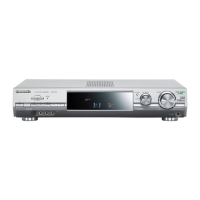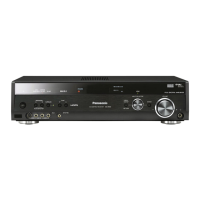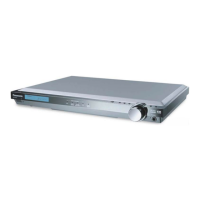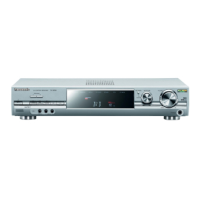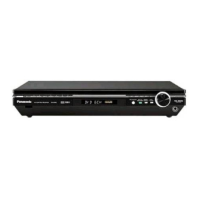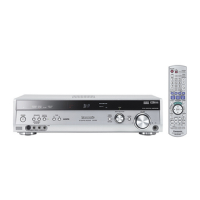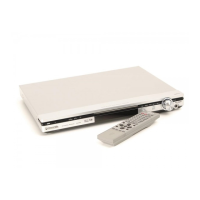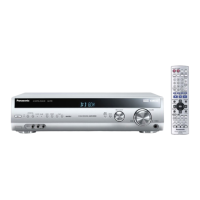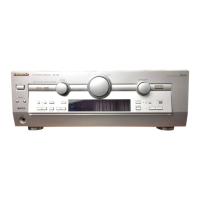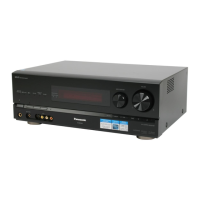Quick guide
7
RQT8739
Connect a TV and a DVD recorder/DVD player using HDMI cables
Connection cable (All cables are sold separately)
.
HDMI stands for High-Definition Multimedia Interface.
• The HDMI cable enables you to transmit digital audio and video signals using a single cable. You can also transmit control signals
using HDMI connections.
• The unit complies with CPPM
∗1
. It can digitally transmit surround sound in DVD-Audio sources.
∗1 Content Protection for Prerecorded Media (CPPM): This copyright protection technology prevents copying of DVD-Audio files.
• We recommend using Panasonic cables 5.0 meters long or shorter for enjoying 1125p
∗2
(1080p) pictures. They prevent picture
degradation.
∗2 1125p (1080p): a progressive (non-interlace) scanning system that sends 1,125 scan lines every 1/60 second.
• The audio signal transmitted through HDMI takes priority when you use both HDMI and digital terminals (á pages 14 to 17) for
connection.
Video and Audio cable Audio cable
HDMI Cable (It is recommended that you use Panasonic’s HDMI cable.)
[Recommended part number: RP-CDHG15 (1.5 m), RP-CDHG30 (3.0 m), RP-CDHG50 (5.0 m) etc.]
Optical fiber cable
When the HDMI terminal does not exist on your TV, DVD recorder (DVD player) or both
You can connect cables to S video terminals. See page 15.
Move on to “Connect speakers”
(á page 8) in the Quick guide.
You can connect cables to component terminals. See page 16.
You can connect cables to video terminals. See page 14.
Step
1
TV
HDMI
(AV IN)
HDMI
(AV OUT)
Rear panel
DVD player
(BD player)
DIGITAL
AUDIO OUT
(OPTICAL)
You need an optical fiber cable for enjoying TV
with surround sound.
See “To enjoy TV with surround sound”
(á page 17) for making analog connections.
HDMI connection
The HDMI input terminal on the unit’s rear is made to specifications that presume connection of a DVD recorder/DVD player.
When other equipment is connected, sounds may not come out of the unit, or pictures shown on the equipment (TV) connected to
the HDMI output terminal may be disrupted.
In such cases, see page 19 and make connections other than HDMI.
DVD recorder
HDMI
(AV OUT)
You can hear DVD sounds from speakers on the TV when you turn off the unit connected in the way shown above (standby
through function). This convenient function enables you to enjoy DVDs late at night.
Insert the cable after
making sure shapes
match.
How to connect the optical
fiber cable
Do not sharply bend the
optical fiber cable.
Note
Connect a TV and a DVD recorder/DVD player using HDMI cables
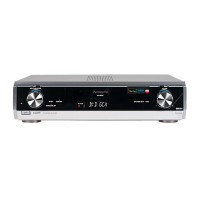
